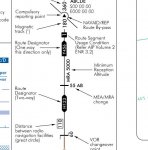There really isn't one uniform answer. You have to start back in the 1958-62 time frame, think like an engineer trained in tube radios, when almost ALL the RCAG/RCO/VOR/RTR sites were platted. Now, add that almost all the RCAG/(C)ASR were manned 8-16 hours a day and could tweak any radio at will. RCO/RCOA sites are usually the RCO being VHF(122.***)/UHF(363.***), the RCOA side is almost always VHF(121.500)/UHF(243.000). They try and follow a plan but with so many VHF RCAG sites transmitting 10 watts, AM you can only do so much, especially when they are fighting a commercial FM broadcaster with an ERP of 150,000-250,000 watts from an 8 bay JamPro and no filtering for 108-136mhz. I've seen on paper, were the RCAG is suppose to have a 150nm range. Not with all the rf floating around today, 100nm is doing good. Like alcahuete said, they are accustomed to 90nm. Most RCAG's are elevated but not mountain top(hill top,yes), by any means. And lots of T1 copper, it's crazy how much T1 copper is out there.
As for "line of sight", growing up in the ham world, that was all you could think of when placing an antenna. Not in their world(FAA), they have there RCAG site which is the bottom of the cone(narrowest) to the top(widest), that is the simplest why to explain it. They mount their antennas on fibercast poles so that the top of the cone is filled in by a lobe. They want a specific area of space covered and thats it.
Questions? Spam? Show me pictures...


